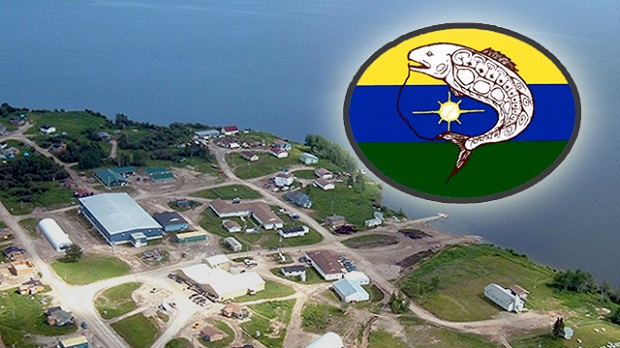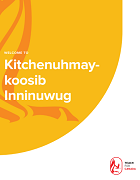Kitchenuhmaykoosib Inninuwug (Big Trout Lake)
About Us

Kitchenuhmaykoosib Inninuwug, also known as Big Trout Lake First Nation or KI for short, is an Oji-Cree First Nation reserve in Northwestern Ontario and is a part of Treaty 9. The community is about 580 km (360 mi) north of Thunder Bay, Ontario. The First Nation's land-base is a 29,937.6 ha (73,976.38 acre) Kitchenuhmaykoosib Aaki 84 Reserve, located on the north shore of Big Trout Lake. Big Trout Lake is a fly-in community, accessible by air, and winter road in the colder months.
Infrastructures:
- Ontario Hydro (poles and lines)
- Sewage Lagoon
- Water Pumping Stations
- Underground Running Water & Sewer Pipe Systems
- Gravel Road to Sandy Banks (approx. 10 miles from community) for Recreation/Leisure/Swimming/Camping Areas
- Community Garbage Dump (approx. 3 miles from community)
- Airport Gravel Runway (approx. 3,900 feet)
- Twenty Eight 50,000 Litre Gas Tank Depot plus one 50,000 litre propane tank
Transportation:
Gravel Road
Water Infrastructure
Kitchenuhmaykoosib Inninuwug has a trucked and piped water delivery system. The primary source of drinking water in the community is lake water. The lake intake is located in a remote area of Westbay. The water quality is very good and consequently, chlorination is the only form of treatment necessary currently.
Sewage Infrastructure
The school, teacherages and Post Island houses are the only buildings connected to the piped sewage forcemain at the present time. The rest of the community is serviced by a sewage truck. The lagoon is located on the Post Island, where the waste water is being treated in a two-celled seasonal retention facultative lagoon system. The main cells are 178 meters by 78 meters, which provides for a 50,000 cubic meter storage capacity.
Geographical and Weather Data
- Located approximately 377 miles north of Thunder Bay, Ontario, Canada or 270 miles north of Sioux Lookout, Ontario.
- 53 58' North Latitude and 90 00' West Latitude, Northwestern, Ontario. Accessible by air year round and winter road during January, February and March
- Ice freezes up in late October or early November
- Ice begins to breakup in May.
- Warmest temperature 45 degrees fahrenheit.
- Coldest temperature 40 degrees fahrenheit.
Lake Size and Attractions:
- Largest lake in Northwestern, Ontario, Canada.
- 36 miles long and 18 miles wide.
- Lots of beaches for swimming, canoeing, fishing & camping.
Wild Life:
Moose, Caribou, Black Bear, Timber Wolf, Red Fox , Beaver, Otter, Muskrat, Wolverine, Rabbit, Marten, Mink, Lynx, Red Squirrel, Weasel, Mouse, Skunk, Chipmunk & Moles.
Wild Fowl & Birds:
Canada Goose, Snow Goose, Scooters, Loon, Grebe, Mallard, Bluebills, Golden Eye Hens, Pintail Hens, Ring Neck Duck, Mergansers, Green Wing Teal, Partridge, Swans, Grouse, Ptarmigan, Bald Eagle, Fish & Bird Hawks, Crow, Raven, Gulls, Robin, Owl, Gray Canada Jay, Sparrow, Night Hawks, Kingfisher, Black Birds, Snow Birds, Heron & several kinds of small birds.
Aquatic Life:
Lake & Brook Trout, Speckled Trout, Walleye, Northern Pike, White Fish, Ling, Sturgeon, Red & Brown Suckers, Perch, Frogs & Garter Snakes.
Insects:
Ants, Worms, House & Black Flies, Wasps, Dragon Flies, May Flies, several kinds of Butterflies and several kinds of bugs & lots of mosquitos.
Timber Resources:
Black & White Spruce, Jack Pine, Evergreens, Poplar and Birch.

|